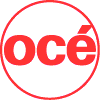Beijing is the capital of the People’s Republic of China. With it’s (approximately) 8.5 million residents it is the second biggest city of China (after Shanghai, which we will also visit). Beijing is a major transportation hub, with dozens of railways, roads and motorways passing through the city. It is also recognized as the political, educational, and cultural centre of the People's Republic of China. Last but not least the city, which is a sister town of Amsterdam, is even more well-known because it hosts the 2008 summer Olympics.
In eastern Asia capitals often have names with a very literal meaning. Bei is translated to ‘north’ and Jing to ‘big town’ which translates Beijing to ‘the northern capital’. Beijing is full of technology with amongst others the China headquarters of Siemens, the R&D centre of Intel and Nokia and the training centre of Airbus.
In Beijing you will see many different types of buildings but most of them can be classified in three main styles. The first is the traditional architecture of imperial China which can be seen in the Forbidden Town, the Gate of Heavenly Peace and the Temple of Heaven. Next there is what is sometimes referred to as the "Sino-Sov" style, built between the 1950s and the 1970s, which tend to be boxy, bland, and poorly made. Finally, there are much more modern architectural forms, most noticeably in the area of the Beijing Central Business District.
Over 95% of Beijing's residents belong to the Han Chinese majority. The ethnic minorities include the Manchu, Hui, and Mongol. A Tibetan high school exists for youth of Tibetan ancestry, nearly all of whom have come to Beijing from Tibet expressly for their studies.
A sizable international community exists in Beijing, mostly attracted by the highly growing foreign business and trade sector, and many live in the Beijing urban areas densely populated northern, northeastern and eastern sections. In recent years there has also been an influx of South Koreans who live in Beijing predominantly for business and study purpose.
With the growth of the city following economic reforms, Beijing has evolved as an important transportation hub. Encircling the city are five ring roads, nine expressways and city express routes, eleven China National Highways, several railway routes, and an international airport. Despite this infrastructure the city is still known for its big traffic jams and the smog that’s in the air. They say that this problem will be solved before the start of the Olympics by making even more highways and public transport facilities.
The moderate temperature at the time we will be visiting Beijing is -3 °C at night and about 7 °C at daytime. Not very warm but at least it is almost always dry at this time of the year










